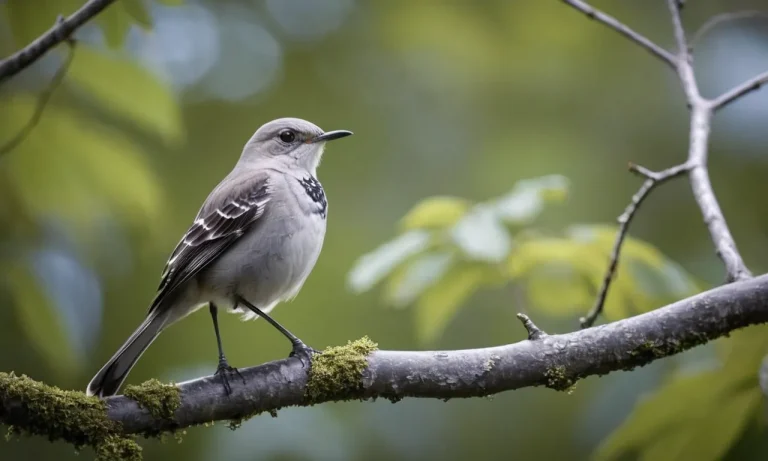Peacocks have long been admired for their vibrant plumage and graceful movements. But beyond their physical beauty, peacocks hold deep spiritual meaning in many cultures and faiths. If you’ve wondered what peacocks might represent on a spiritual level, read on to learn more.
Peacocks have significant symbolic meaning in Hinduism, Christianity, Buddhism, Islam, and more. Their feathers and imagery are incorporated into myths, rituals, temples, and artworks across these traditions. Overall, the peacock tends to represent renewal, integrity, vision, royalty, spirituality, and watchfulness.
Symbolism of Peacocks in Hinduism
Associated with Lakshmi
In Hinduism, peacocks are strongly associated with the goddess Lakshmi, the deity of wealth, fortune, and prosperity. It is believed that the feathers of a peacock represent the qualities of beauty, abundance, and purity. In many Hindu temples, images or statues of Lakshmi are depicted with peacocks by her side, symbolizing her divine presence and blessings.
Symbolic of Morality
Peacocks are also seen as symbols of morality in Hinduism. The peacock’s vibrant and colorful plumage is believed to represent the divine beauty and purity that a person should strive for in their thoughts and actions. It is believed that by embracing moral values, one can achieve spiritual growth and enlightenment, just like the majestic peacock spreading its feathers.
Connected to Krishna and Radha
Peacocks hold a special significance in the stories and mythology surrounding Lord Krishna and Radha. Krishna, often depicted as a playful and mischievous deity, is said to have a close connection with peacocks. It is believed that Krishna’s melodious flute playing captivated the peacocks, who would dance joyously in response. The peacock’s dance symbolizes the soul’s longing for a union with the divine, just as Radha yearned for Krishna’s love.
Peacocks’ association with Hindu deities and their symbolism in Hinduism makes them an important and revered creature in the religion. Their presence in temples and religious ceremonies serves as a reminder of the spiritual values and aspirations that devotees strive to embody.
Meaning of Peacocks in Christianity
An Ancient Christian Symbol
Peacocks have been recognized as important symbols in Christianity for centuries. They are often depicted in religious artwork and architecture, particularly in churches and cathedrals. The peacock’s significance in Christianity can be traced back to ancient times, where it was associated with immortality and spiritual rebirth.
In early Christian art, peacocks were commonly depicted drinking from the Fountain of Life, which symbolizes eternal life and divine grace. This imagery suggests that the peacock represents the believer’s spiritual renewal through baptism and the nourishment of the soul.
The belief in the spiritual symbolism of peacocks is not restricted to any specific denomination within Christianity. It is a widely recognized symbol that transcends different branches of the faith.
Representation of Christ’s Resurrection and Immortality
Peacocks are often associated with Christ’s resurrection and immortality in Christian iconography. The peacock’s ability to regenerate its feathers became a powerful symbol of Christ’s triumph over death and His promise of eternal life.
The peacock’s dazzling and vibrant plumage is a metaphor for the radiance of Christ’s glory. Just as the peacock’s feathers capture the attention of onlookers, so too does Christ’s resurrection captivate the hearts and minds of believers.
In addition, the peacock’s habit of shedding its feathers and growing new ones every year mirrors the cycle of life, death, and rebirth. This cycle aligns with the Christian belief in the resurrection of the body and the hope of eternal life in heaven.
Peacock Symbolism in Buddhism
Peacocks have long held significant symbolism in various cultures and religions, including Buddhism. In Buddhism, the peacock is considered a symbol of wisdom and compassion, representing the qualities that practitioners strive to cultivate on their spiritual journey.
Represents Wisdom and Compassion
In Buddhism, wisdom is regarded as an essential virtue, as it leads to the understanding of the true nature of reality and the cessation of suffering. The vibrant and colorful feathers of the peacock are seen as a visual representation of wisdom, reminding practitioners to seek knowledge and understanding in their quest for enlightenment.
Compassion, another fundamental principle in Buddhism, is symbolized by the peacock’s ability to spread its feathers in a magnificent display. Just as the peacock opens its feathers to reveal its beauty, Buddhists are encouraged to open their hearts and show compassion towards all living beings.
Did you know? The peacock’s ability to eat poisonous plants without getting sick is also seen as a symbol of transmuting negativity into positivity, a concept deeply rooted in Buddhist teachings.
Appears in Buddhist Art and Architecture
The peacock’s significance in Buddhism is reflected in various forms of Buddhist art and architecture. Peacock motifs can be found in ancient Buddhist sculptures, paintings, and temple decorations. These depictions often highlight the peacock’s beauty and grace, serving as a visual reminder of the virtues that practitioners aspire to embody.
Buddhist temples and monasteries around the world often incorporate peacock imagery in their designs. For example, the Peacock Throne, a famous artifact in Buddhist history, was adorned with intricately carved peacock motifs. These artistic representations serve as a constant reminder of the spiritual qualities that the peacock symbolizes.
Fun fact: The famous Borobudur temple in Indonesia features numerous stone reliefs depicting peacocks, emphasizing the significance of this bird in Buddhist symbolism.
Islamic Associations of the Peacock
Seen in Mosques and the Quran
In Islamic culture, the peacock holds a significant place due to its mention in the Quran and its presence in mosques. The peacock is often depicted in Islamic art and architecture, adorning the walls and ceilings of mosques, as well as in intricate calligraphy. The bird’s vibrant feathers and graceful demeanor have long been associated with beauty and elegance, qualities highly valued in Islamic culture.
The peacock is mentioned in the Quran as one of the beautiful creations of Allah. It is described as a creature with stunning plumage and a melodious call, symbolizing divine beauty and harmony. The Quranic verse 24:35 states, “And We have certainly created man from a sperm-drop of altered fluid, to test him; and We made him hearing and seeing.” Some scholars interpret this verse to include the mention of the peacock, highlighting its significance in Islamic spirituality.
The presence of peacocks in mosques further enhances their spiritual symbolism. These majestic birds can often be found roaming the courtyards and gardens of mosques, adding to the serene and peaceful atmosphere. Their graceful movements and vibrant colors are believed to inspire awe and reverence, reminding worshippers of the beauty and magnificence of Allah’s creation.
Significance in Sufism
In Sufism, the mystical branch of Islam, the peacock holds a special place as a symbol of spiritual illumination and transcendence. Sufis believe that the peacock’s radiant feathers represent the divine light and the unveiling of spiritual truths. Just as the peacock displays its feathers in all their glory, Sufis aim to manifest their inner beauty and spiritual qualities to the world.
Furthermore, the peacock’s mesmerizing display of its feathers during courtship dances is seen as a metaphor for the Sufi’s journey towards spiritual enlightenment. Like the peacock, the Sufi seeks to unveil their innermost self and connect with the divine through rituals, meditation, and contemplation.
It is important to note that while the peacock holds spiritual significance in Islamic culture and Sufism, its symbolism may vary among different interpretations and traditions within Islam. The spiritual meaning of the peacock is deeply rooted in Islamic history and continues to inspire contemplation and reflection among believers.
Additional Symbolic Meanings of Peacocks
While the peacock is commonly associated with beauty and pride, this magnificent bird holds a deeper spiritual significance. In addition to representing beauty and vanity, peacocks are also linked to various symbolic meanings that have been recognized across different cultures and time periods. These additional meanings include renewal and rebirth, integrity and incorruptibility, royalty and authority, vision and spiritual awakening, as well as watchfulness and protection.
Renewal and Rebirth
Peacocks are often seen as symbols of renewal and rebirth. The shedding and regrowth of their feathers can be interpreted as a metaphor for personal transformation and growth. Just as the peacock sheds its old feathers to reveal vibrant new ones, we too can let go of our past and embrace a fresh start.
Integrity and Incorruptibility
With their vibrant and iridescent feathers, peacocks symbolize integrity and incorruptibility. The peacock’s feathers do not lose their brilliance even after being plucked, which is seen as a representation of unwavering moral character. This symbolism serves as a reminder to stay true to ourselves and maintain our integrity, even in the face of adversity.
Royalty and Authority
In many cultures, peacocks have long been associated with royalty and authority. Their regal appearance and majestic demeanor have made them a symbol of power and prestige. In ancient civilizations like India, the peacock was considered the bird of the gods and was often associated with deities.
Vision and Spiritual Awakening
The peacock’s ability to see beyond the ordinary is another symbolic meaning associated with this magnificent bird. The peacock’s eyespots on its feathers are believed to represent the all-seeing eye, which signifies spiritual insight and awareness. It serves as a reminder to trust our intuition and look beyond the surface to gain a deeper understanding of ourselves and the world around us.
Watchfulness and Protection
Peacocks are known for their keen sense of awareness and their ability to protect themselves and their surroundings. Their loud calls and vibrant displays are not only for attracting mates but also serve as a warning to potential predators. This symbolism reflects the importance of being watchful and vigilant in our lives, protecting ourselves and those we care about.
The spiritual meanings associated with peacocks offer us a deeper understanding of their symbolism and remind us to embrace qualities such as renewal, integrity, royalty, vision, and watchfulness in our own lives. Whether we appreciate their beauty or are drawn to their spiritual significance, peacocks continue to captivate and inspire us.
Conclusion
Across cultures and faith traditions, the peacock holds deep symbolic significance. With their colorful plumage, peacocks represent renewal, vision, integrity, and spirituality. Specific meanings vary, but the peacock’s beauty makes it a popular emblem of divine qualities.
So next time you spot a peacock, consider the deeper meaning behind this captivating bird. Their feathers may have spiritual overtones relating to morality, compassion, resurrection, and more. Simply appreciating their beauty can be an act of admiring the divine.






